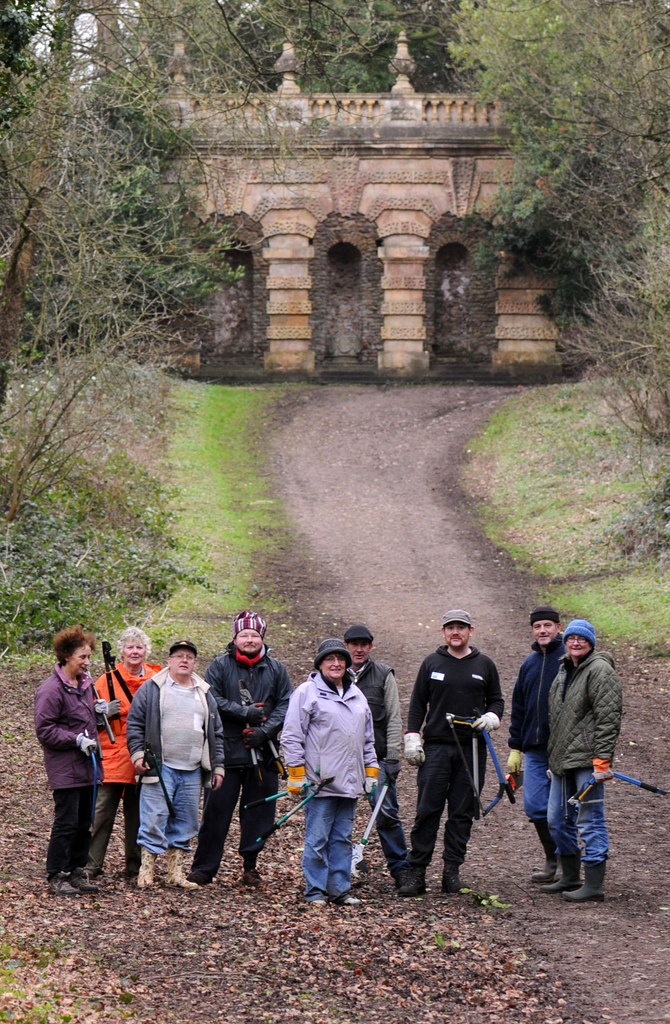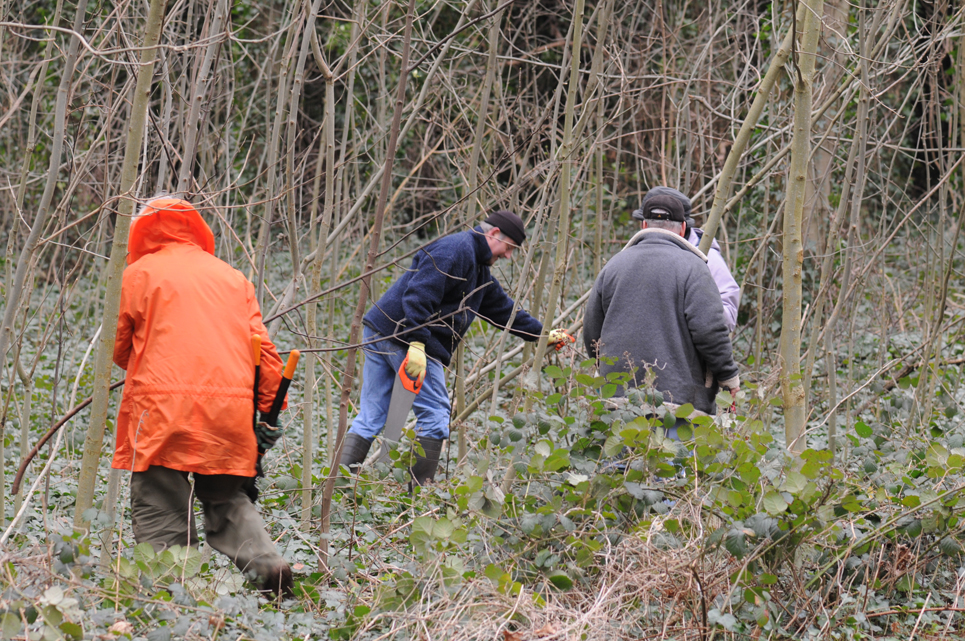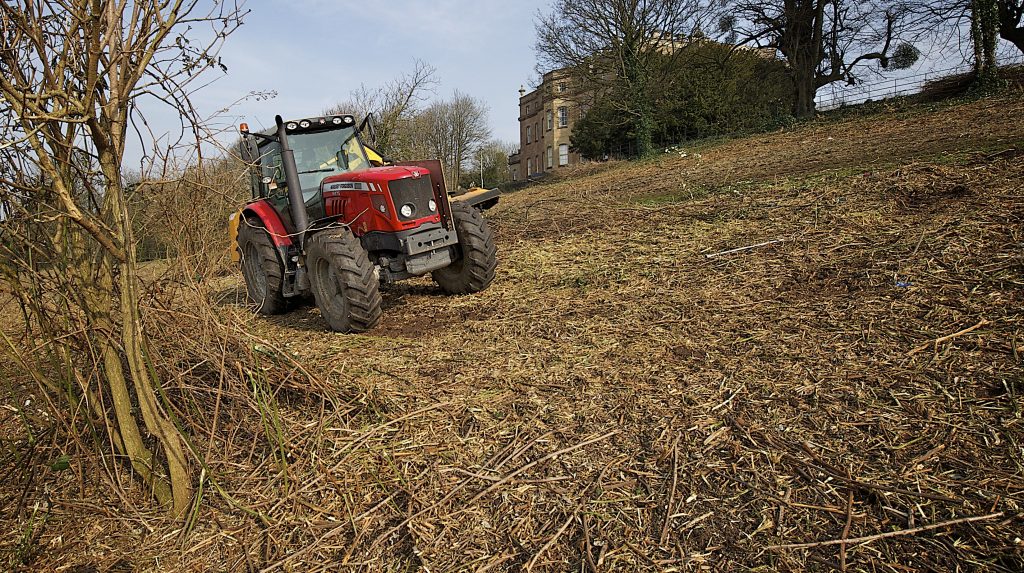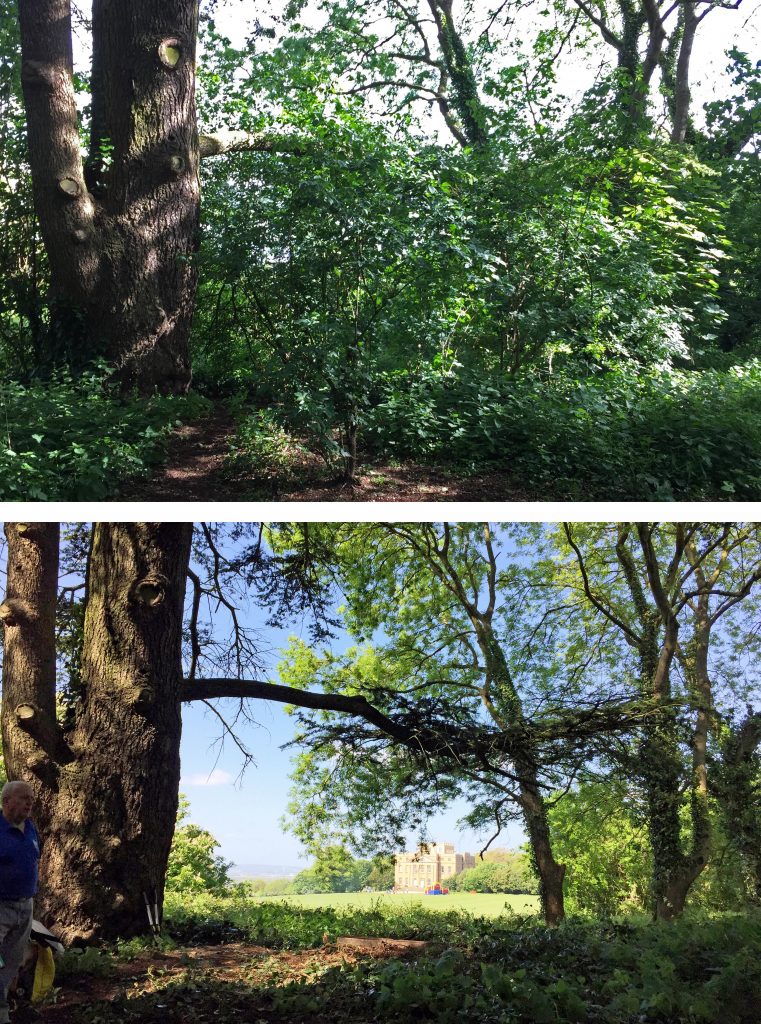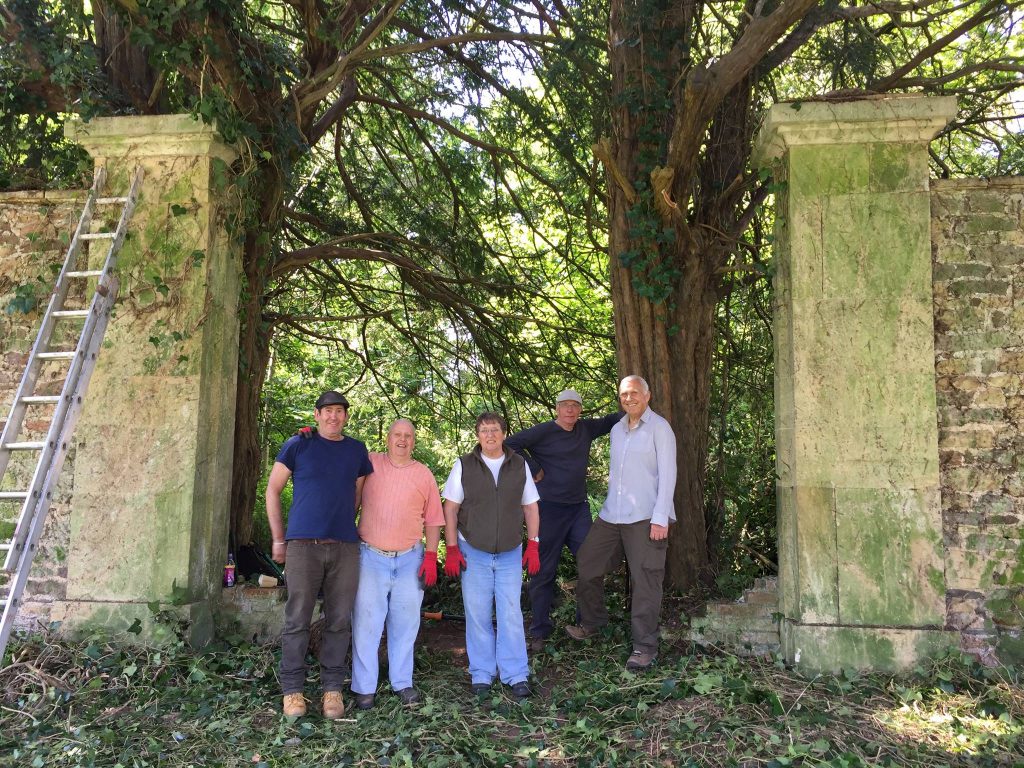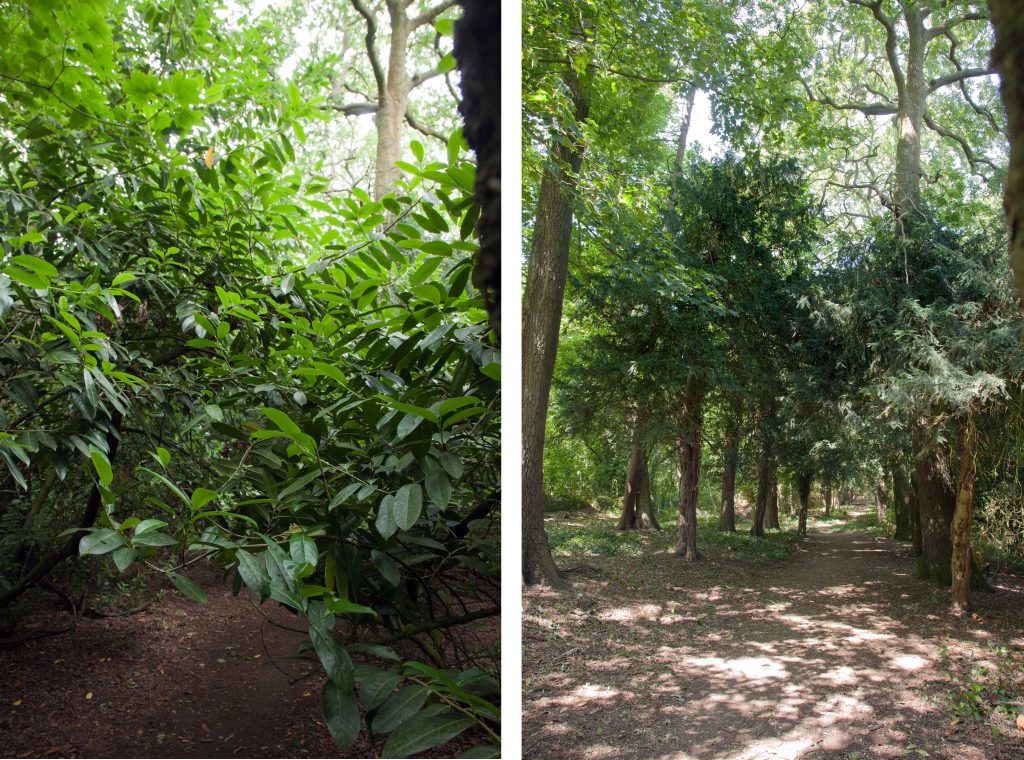The New Year brings with it the tenth anniversary of the Kings Weston Action Group. This is a good moment to look back and reflect on our achievements, especially when there is so little else to be able to report during this bleak month. In 2011 David Martyn and Tim Denning realised a mutual passion for Kings Weston, began researching its history, and realised the perilous state of the important landscaped parkland. Fortunately that passion was soon shaded by hundreds of people across the country who became our supporters and from the local community who wanted to help conserve the estate.
It’s not until we sat down to review exactly what we had been doing over the last decade that the startling scale of volunteer efforts became clear. Some of the figures speak for themselves. Where in 2011 there were just two benches on the whole 300 acre estate, there are now 17; a single litter bin is now four and have had a big impact on litter and dog waste; working parties have covered literally acres of land. Volunteers have valiantly removed 7.7 acres of invasive cherry laurel, and a colossal 11.3 acres of woodland has been managed through natural spacing. 2.3 acres of scrub and bramble encroachment have been pushed back including around the ancient lime avenue, the slopes around Shirehampton Park, and the Circle where a fields of daffodils is now the crowning achievement of the clearances. This map charts many of our volunteer’s achievements.
Since 2014 all of our work has been governed by a Conservation Management plan published by the City Council with input from the interested parties around the estate. This is our road map for the future preservation of the historic landscape. Over the next few months we’ll take a look at some of our achievements under the umbrella of KWAG’s mission to “conserve, enhance, and celebrate the historic estate.
Part I: To conserve…
Conservation is core to KWAG’s role, of both the historic and natural environment. Conservation as we think about it here is about managing what we already have , and ensure the future preservation of the estate for everyone to enjoy. This work seeks to reveal the historic value of the estate whilst ensuring the health of its woods, grasslands and other habitats. It was recognised at a very early stage that the condition of the estate had declined badly since WWII with features lost, and the landscape neglected and overgrown. We established the action group to literally take action to help reverse that decline. When we were setting out a few of us began informally clearing areas around the ancient lime avenue, pushing back brambles and felling self-seeded saplings that had been encroaching on the it. For several Saturdays in 2011 this work attracted a good deal of interest and helped us raise the profile of the embryonic group.

Many of our projects have revolved around woodland management, and in fact it was with natural spacing along the Echo path that we began with our first official volunteer event in January 2012. We’re delighted that some of our volunteers for that first Working Party are still regularly attending today! This work removed hundreds of saplings that threatened to inundate the wood and challenge the more established trees. The event set the model for all subsequent working parties. These have continued every month with little interruption since then until the advent of Coronavirus. Even so we’ve clocked up around 100 working parties with an estimated four-and-a-half thousand man-hours of work undertaken!
We don’t have space here to detail all of our working party projects over the years, but it’s worth noting some of our major projects. We like to set clear goals for working parties and projects can be planned to last several months at a time. Naturally we love to record everything we do with our popular before-and-after photos. There have become a unique record of the decade’s achievements.
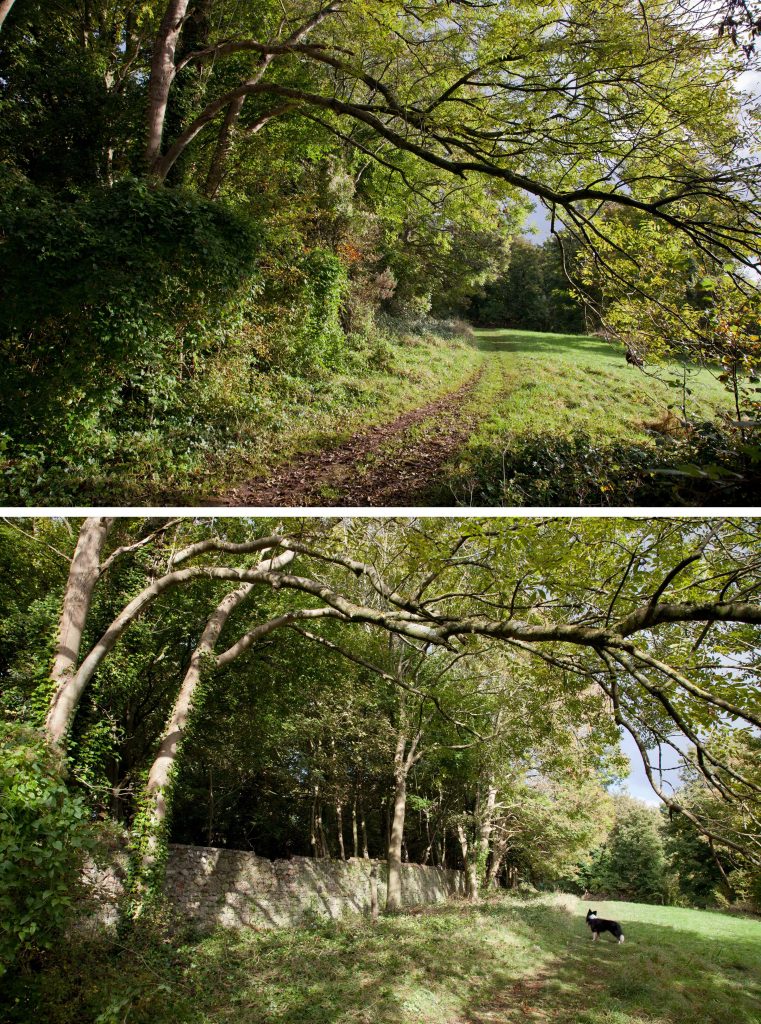
Later in 2012 we set ourselves the task of clearing the Georgian viewing terrace behind the Echo. Before we started work the views from it were blocked be an impenetrable hedge of undergrowth and the terrace wall itself invisible from outside. Over several months we gradually cleared both sides to reveal the spectacular views once again which, we’re glad to say, are still a highlight of the park. We were glad to have been supported by Bristol Parks who came along behind us to clear the larger trees that were threatening the stability of the wall. It was the success of the clearance that led us to seek national Listed building designation for the terrace as an important feature of the landscape design. Work continued nearby to open up the copses below the terrace to reveal the expanses of daffodils that are such a feature of the slopes here.
Conservation work hasn’t been restricted to tree felling and underbrush. In 2013 we attacked the derelict tennis court alongside Shirehampton Road. This had been abandoned for decades before and had become unsightly and dangerous. Again over several months we pulled down the steel fence and trimmed out the undergrowth that had pushed its way through the tarmac. The impact was striking and our efforts were followed up by the Council who have begun re-naturalising the area back into the important grassland around it. The “shop window” for the estate has been much improved by this removal, especially on approaching the estate from Shirehampton.

After much lobbying of the council 2013 was also the year that the brambles engulfing the meadow below Kings Weston house were finally removed.
Our first experience with cherry laurels saw us return to the Echo Walk in 2014. From memory this may have been some of our most challenging work to date, with huge and tangled masses of choking undergrowth that had starved the native woodland of light and nutrients. The ambition here was to both rid the woodland of the invasive plant and to open up the route of the Georgian pleasure walk as a more accessible path between Echo and house. By now we had a good idea of how amazing our working party volunteers were, and quite how much our team could achieve in relatively short time and the whole area was tackled in just four months events. The Council Parks team never fail to be amazed at how much KWAG volunteers can do, and were happy to follow behind us poisoning the stumps we’d left.

Our next major project christened Lifting the Curtain was the biggest we’d taken on at that point. Our goal was to clear undergrowth along the entire length of the South Walk and to open up views towards Kings Weston house from this important section of the main walking circuit. The walk had in places become a green tunnel through the undergrowth. Seeing the opportunity of visually reconnecting the path and house we felled self-seeded saplings, brambles, and undergrowth, seeking to restore lost prospects. In the process we discovered another planted line of mature trees that had been planted as part of the landscape design and a set of WWII concrete steps which, once restored, form an important and well used part of the walking routes through the park. Work close to the steps also uncovered some historic finds from the same period which are now part of KWAG’s collections. Most of 2015 was taken up with the South Walk project, but we returned again a couple of years later to open up sections of the southern side of the walk, looking over Shirehampton Park. This work too restored some fine views to the park.

Conservation work has sought to reveal and celebrate some of the better and less well known monuments of the estate. We’ve been particularly keen to save the glasshouse wall in the walled gardens. At 54ft long it was once one of the largest in the country when it was erected in 1763, but is now reduced to a short section of wall behind the old stables. To coincide with the pubic opening of the gardens around Kingsweston School in 2016 we undertook to open up the historic glasshouse structure that had once housed some of the finest exotic specimens in Europe. Undergrowth was removed from the wall, and saplings that threatened its stability and survival pushed back. Whilst our work over two months has improved the condition of the structure this remains a feature in dire need of conservation. A couple of months later we also opened up views to the Grade I Listed Loggia from the parkland below.
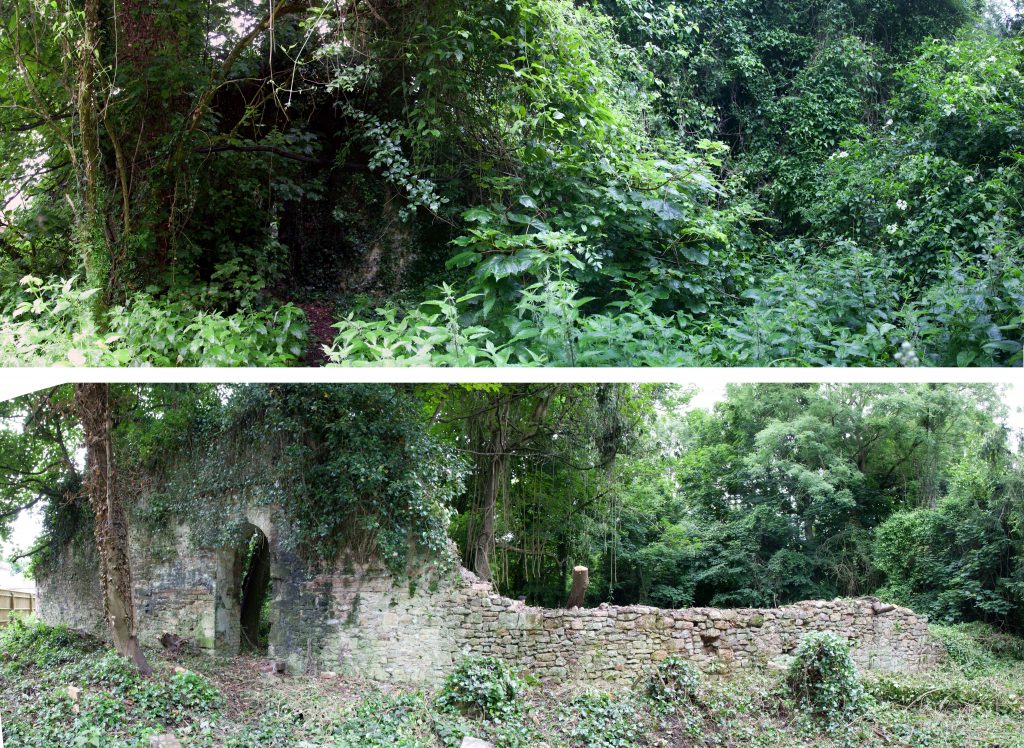
Cherry laurel occupied us for months afterwards, and much of our time into 2020. We were working with the Council on Forestry Commission sponsored work to improve the health of the native woodland by removing the invader and opening the forest floor for natives to thrive. The dark overcrowded and impenetrable laurel thickets have been a startling contrast to the open woodland that we’ve managed to reveal. This laborious task took us from The Circle, right through the woodland almost as far as Penpole Point. In the process we revealed the woodland avenues, majestic specimen trees, parts of the Victorian pinetum around Jubilee Clearing, and a long path lined with oaks and yews, probably part of the Nineteenth Century landscaping of the woodland. To learn that almost eight acres of laurel has now been felled is simultaneously surprising for its extent, but unsurprising for the effort it took to fell, but there remains much more to deal with. The removal of laurel has been controversial for the sudden change in appearance, but has been essential to protect the biodiversity of the ancient woodland and we’ve sought to offset the impact by planting hundreds of natives in their place, but more of that when we celebrate the enhancement of the estate in next month’s newsletter.

As ever thanks has to go to everyone who has come out to help our working parties, past and present, and we hope to see everyone again in the not too distant future.
If you’re eager to hear more about our first ten years you might be interested in watching this recent talk given to Stoke Bishop Local History Group: https://www.youtube.com/watch?v=vR3u1oDpVf4&feature=youtu.be



